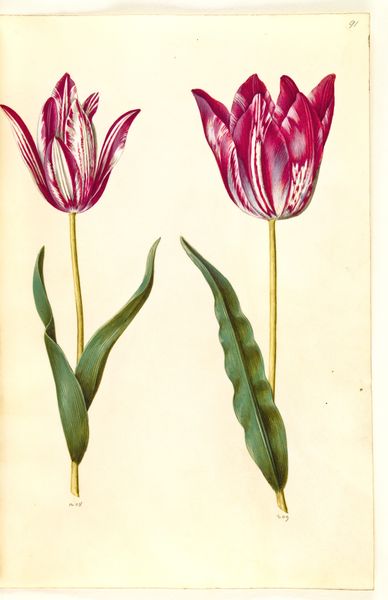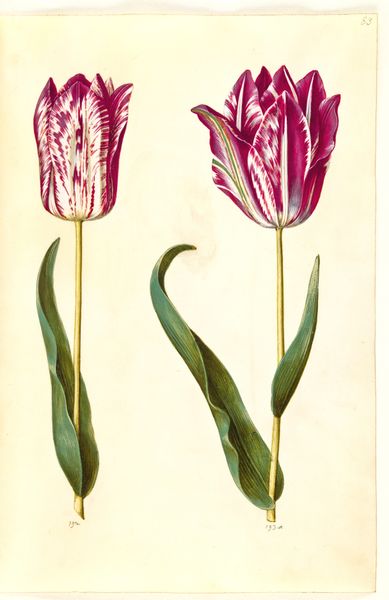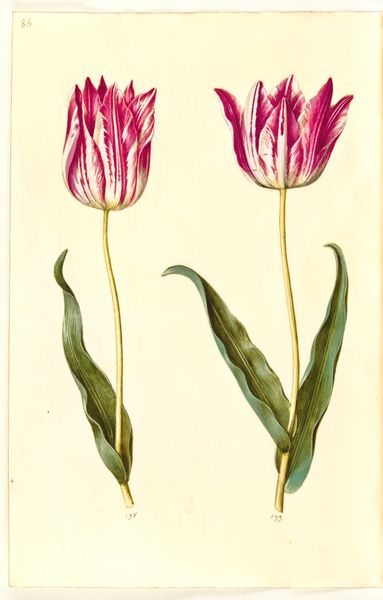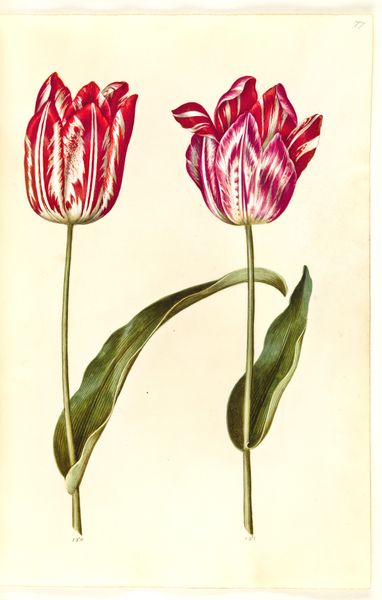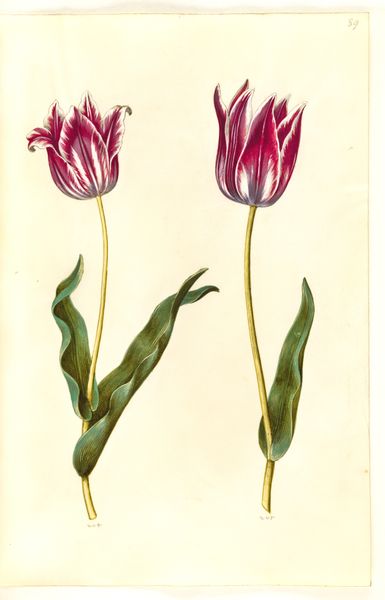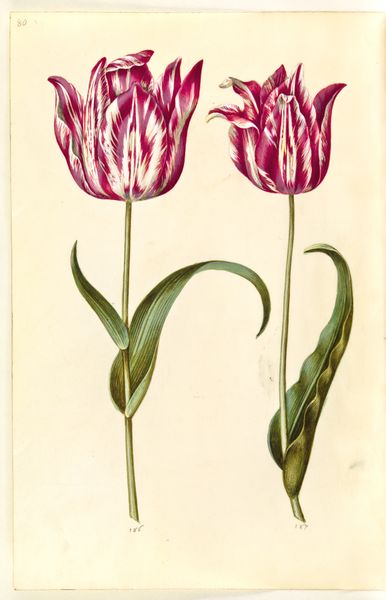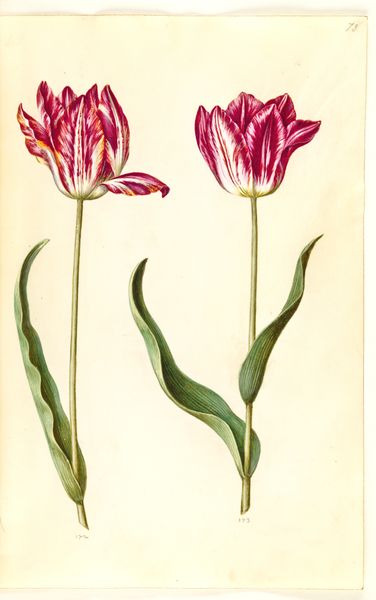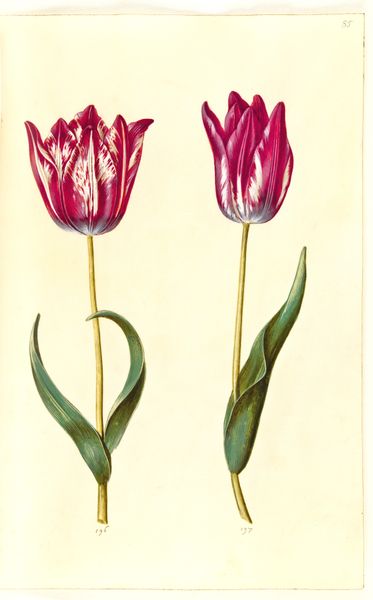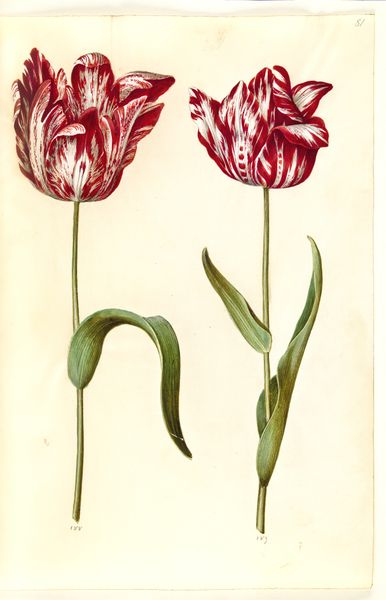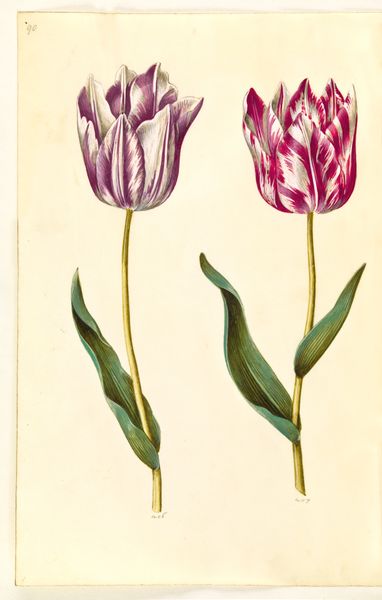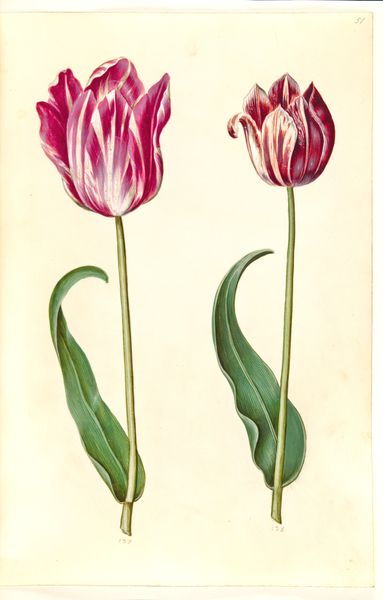
drawing, gouache
#
drawing
#
gouache
#
watercolour illustration
#
botanical art
Dimensions: 375 mm (height) x 265 mm (width) x 85 mm (depth) (monteringsmaal), 358 mm (height) x 250 mm (width) (bladmaal)
Hans Simon Holtzbecker rendered this watercolor and gouache of "Tulipa gesneriana" in the 17th century. During this period, the Dutch Golden Age was in full bloom, marked by unprecedented economic prosperity and cultural flourishing. Against this backdrop, the tulip became more than just a flower, it became a symbol of wealth and status. The phenomenon known as "Tulip Mania" saw the prices of rare bulbs soar to unimaginable heights, leading to both great fortunes and devastating financial ruin. Holtzbecker's detailed depiction of the tulip, with its striking purple and white petals, captures the allure and desire that these flowers inspired. But it also hints at the social and economic inequalities that fueled the mania, as only the wealthy could afford to participate in this speculative market. The artwork serves as a reminder of the complex relationship between beauty, desire, and social stratification. It invites us to reflect on our own cultural obsessions and the values we assign to objects of beauty and desire.
Comments
No comments
Be the first to comment and join the conversation on the ultimate creative platform.

